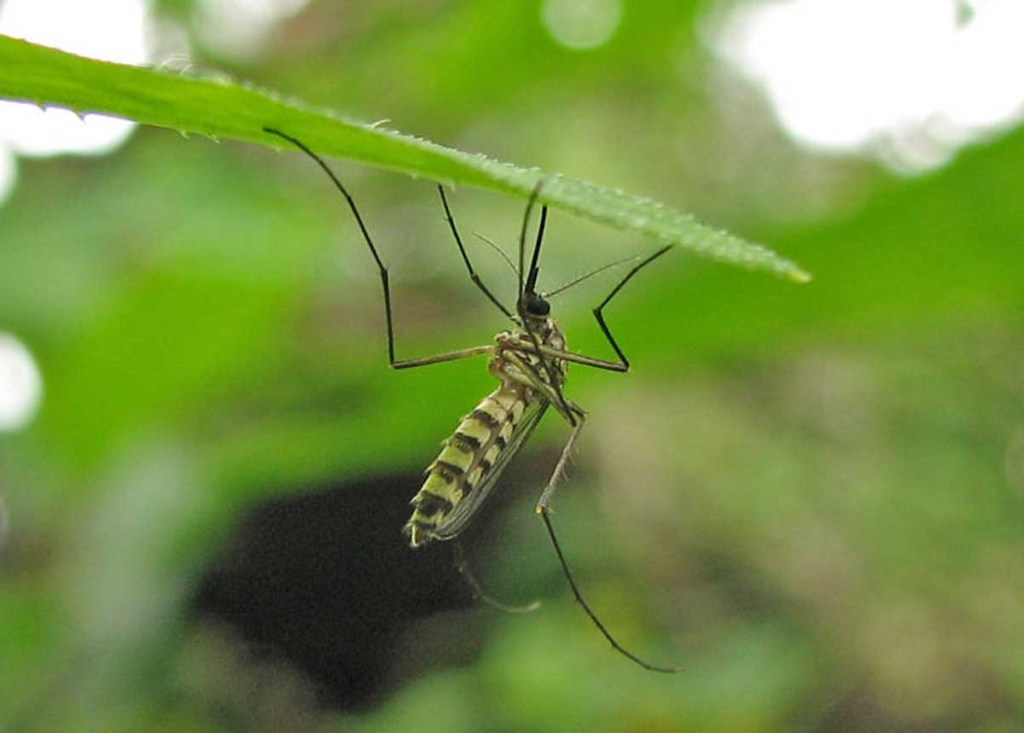Bad news: Raindrops don’t swat down mosquitoes
Published 7:54 pm Tuesday, July 15, 2014

- mosquito.jpg
A mosquito buzzes its way toward an open window, its unsuspecting victim sleeping peacefully in bed. Suddenly, a raindrop weighing about 50 times as much as the mosquito plummets straight down toward the insect. The drop should have the impact of a bus running over a human and drive the mosquito downward at a force up to 300 times that of gravity.
Trending
Sadly for the mosquito’s next victim, the pest will survive this collision.
That’s the conclusion of a team of engineers and biologists at the Georgia Institute of Technology in Atlanta, which used a combination of real-time video and sophisticated math to demonstrate that the light insect’s rugged construction allows the mosquito to shrug off the onslaught of even the largest raindrop. The findings offer little aid in controlling the pest but could help engineers improve the design of tiny flying robots.
Aviation engineers know a lot about how rain impairs the flight of airplanes. Heavy rain increases drag, reduces lift, and increases the risk of stalling. But research on the impact of water on flying animals is sparse. One recent study on bats, led by biologist Christian Voigt of the Leibniz Institute for Zoo and Wildlife Research in Berlin, found that these furry fliers need about twice as much energy to power through the rain compared with dry conditions. Still, although some researchers have studied the dynamics of insect flight under a variety of conditions, scientists know very little about the effects of rain.
To help fill this knowledge gap, mechanical engineer David Hu and his colleagues at the Georgia Institute of Technology decided to subject Anopheles mosquitoes, the primary insect that infects people with malaria, to artificial rain conditions. Hu’s team is already well-known for its studies of water-animal interactions, including the physics of how wet dogs dry themselves by shaking the water off.
The team constructed what it calls a “flight arena,” a 20-centimeter-high acrylic cage covered with a mesh top that allowed water in but kept the mosquitoes from escaping. In an initial round of experiments, the researchers shot jets of water into the cage to simulate raindrops falling 10 meters, the height at which they achieve their maximum velocity. Six mosquitoes placed in the cage were then filmed with a high-speed video camera that captured 4000 frames per second.
It was like a game of insect pinball. All six mosquitoes were able to recover from drop impacts without crashing to the bottom of the cage. In one typical example, a mosquito hit by a water drop tumbled a distance of 13 body lengths before separating itself from the drop and flying laterally to land on the side of the arena. To better picture what was happening, the team subjected 20 mosquitoes to drops that were falling more slowly. The videos showed that most of the collisions were glancing blows on the wings and legs rather than on the insects’ bodies. The impacts caused the mosquitoes to pitch, yaw, or roll depending on where they were hit.
But even when the mosquitoes took a direct hit, they still recovered after falling no more than about 20 body lengths. Hu and his colleagues hypothesized that due to the insects’ low mass — about 2 milligrams, whereas a raindrop can be up to 100 milligrams — the raindrop loses very little speed and momentum upon encountering the mosquito and thus imparts very little actual force to it. To test this hypothesis, the team constructed insect “mimics” made of small Styrofoam spheres the same weight and size as the mosquitoes. When the researchers released the spheres into the arena, they were momentarily suspended in mid-air as water droplets collided with them from above.
The experiments showed that the water drops, which ranged between one and 300 times the weight of the mimics, slowed only 2 percent to 17 percent upon impact. The team concluded that the raindrops deform and largely bypass the much smaller bodies of the mosquitoes. Hu and his co-authors suggest in their report, published online this week in the Proceedings of the National Academy of Sciences, that this surprising effect is due not only to the mosquito’s lightness of being but also to its exoskeleton, the hard outer covering that protects its inner organs.
To corroborate their findings, the team subjected the mosquitoes to one last stress test, compressing the insects’ bodies to reveal what forces they could actually withstand. The team had calculated that the impact of a raindrop amounted to between 200 and 600 dyne, a standard measure of applied force. After being subjected to a compression of about 3000 to 4000 dyne, many times the impact of a raindrop, the mosquitoes were still able to fly once released.
Robert Dudley, an expert on insect flight at the University of California, Berkeley, says that the paper “convincingly shows that mosquitoes survive and mechanically compensate for single impacts of relatively large water drops mostly because of their low mass as well as their flexible . . . exoskeleton.” Voigt adds that the study is a “wonderful contribution” to our understanding of how flying animals perform under various weather conditions. Voigt says that he was “really struck, like the mosquitoes” by the very high G forces, up to 300 times gravity, that the insects are subject to, which is the “highest ever recorded acceleration that animals have survived.” (Humans can withstand only about 25 G.)
Hu says that his team’s results may have implications for the design of so-called micro-airborne vehicles (MAVs), some of which are as small as dragonflies and are increasingly used by the military for surveillance in war zones and for search-and-rescue operations. Voigt, however, is skeptical. “We are far away from creating aerial robots the size of a mosquito,” he says, “I am unsure whether these findings may be incorporated” into superior MAV designs.


